Tips & Taboos of Social Media for Biz

Social media sites are partly responsible for the growth of any modern business.
Facebook, Twitter, LinkedIn, Google+ etc., are some examples of social media sites in use by companies. Social is the initial hotspot for organizations to declare, promote and launch their products and services.
Organizations must manage their account on social sites in an efficient manner, however, for business progression. Here are some tips and taboos of social media for business.
Complete Your Social Media Profiles ... Consistently
Each of your social media accounts will include some kind of profile. Profile fields may include a bio, URLs, blogs, locations and a headshot. All these details should be completely filled up and updated regularly. This will aid in recognition, broader reach and ongoing communication with the same contacts on multiple sites.
Use images and Videos
People are more attracted to images than descriptive text. Instagram, Pinterest and Vine are three examples of visual-based content sharing and can serve as visual inspiration for other networks as well.
By creating graphics, sharing photos and posting videos, a brand will create awareness about a product or service. As a result, product-selling ratio may increase.
Use a Social Media Dashboard
A social media dashboard is a social media management tool (e.g. Sprout Social, Buffer or Hootsuite) that individuals or companies can use to coordinate a social media presence across multiple channels or accounts, through a single interface.

Once you know how much time you will be spending on social media sites, you will need to make sure you are clear on your goals. What do you want to accomplish with social media? Are you interested in generating leads, finding colleagues to collaborate with, establishing yourself as an expert in your industry?
One of the biggest challenges with social media is time management. Social media dashboards can help to manage social media time more effectively especially Buffer (shown above), which schedules posts based on optimal times for engagement depending on location and post frequency.
These tools allow you to set up alerts and notifications, create groups, skim activity quickly and schedule updates so you can automate some of the social media process.
Use Social Media for Customer Service
Organizations should create a page for its newly launched product or service on social media sites. This will help customers give positive or negative feedback about the products. Hence, the organization can enhance and modify the product based on the provided feedback. As a result, customer satisfaction criteria will be fulfilled.
There are many different tools that can be used to track mentions of your company name and products across the Web like Google Alerts, NutshellMail, etc.
Google Alerts is a content change detection and notification service, offered by the search engine company Google. The service sends emails to the user when it finds new results-such as Web pages, newspaper articles, or blogs-that match the user's search term.

NutshellMail is a social network aggregation service that allows users to manage and interact with updates from social networking services. NutshellMail's mission, according to its website, is to keep users connected yet productive at the same time. NutshellMail supports Facebook, Twitter, MySpace, LinkedIn and Ning.
What not to do while Using Social Media for Business
*Do not share too much. Share things which are relatively important to business. Avoid nuisance.
*Do not promote yourself and your business products and services too much. Balance your self-promotion by promoting and helping others. This will make your friends and followers much more receptive to your promotional posts. This in turn will make them to pass your promotions on to their own networks.
*Do not spam your fans and followers. Spam isn't just for email anymore. It has also entered into the world of social media. Some forms of social media spamming to stay away from include unsolicited sales pitches, posting the same updates over and over and sending private messages after being asked to stop.
*Don't Lie or Mislead. Social media can feel like a popularity game. There are the "cool" kids, cliques of people who have been around for a while and have created large followings, and everyone else seems to fall behind.
It may be tempting to create a fake persona or be less than 100 percent genuine in what you are sharing in order to elevate your standing and make your following grow at a faster pace. This is never a good idea, and can not only hurt your reputation, but it can also hurt your brand over the long term.
Keep in mind that there are a lot of different ways to use social media, and there really aren't rules about what you should and shouldn't do. There are, however, best practices mentioned here that you can follow if you want to create thriving and engaged communities on social media sites.
Author Bio: Chirag Leuva is the CEO of Yudiz Solutions, a mobile game development company; where he works to bring client ideas to reality. He enjoys pushing the limits of user interaction and finding ways to create awesome reusable components within a mobile environment.

Subscribe to Our Newsletter!
Latest in Social Media










